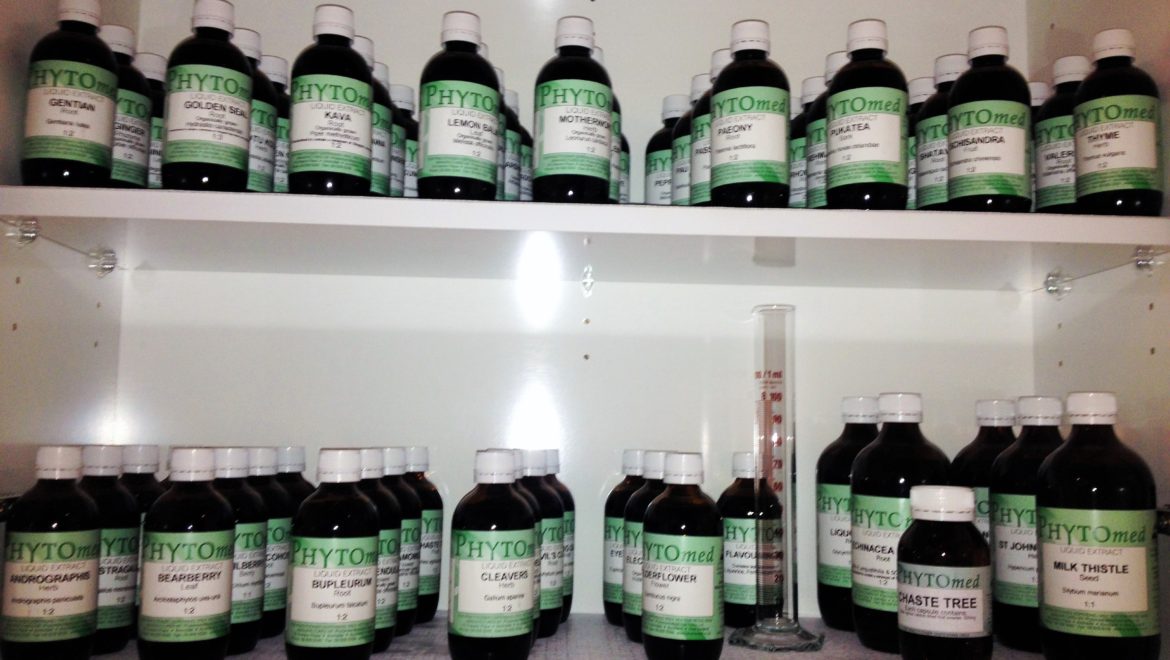“Let food be thy medicine and medicine be thy food” Hippocrates.
Traditional Medicine was developed over generations within various countries/continents of the world before the era of modern medicine. It stems from a natural and holistic view before medical and drug intervention. To this day, up to 80% of people in some countries in Asia and Africa still rely on Traditional Medicine for their primary healthcare needs. The most well-known types are Traditional Chinese Medicine and Ayurvedic Medicine.
Traditional Chinese Medicine (TCM)
“The Chinese do not draw any distinction between food and medicine” Lin Yutang.
Based on more than 3,500 years of herbal medicine, acupuncture, cupping therapy, massage, movement (qi gong), and diet. One of the basic tenets is that the body’s vital energy (qi) circulates through the channels (meridians) in our body. When these become blocked, disease progresses. You will most likely have heard of yin and yang, TCM believes health is achieved when yin and yang is in harmony. When someone has a health condition, the opposite is recommended to rebalance. Most importantly, food is medicine.
TCM 5 Element Theory is comprised of wood, fire, earth, metal and water. Everything in the universe are the products of the movement and mutation of these 5 qualities.
Here is an example of this in practice. New Zealanders consume a high metal diet. Metal foods include bread, beef, cheese and potatoes. Many common Kiwi meals are a combination of bread (anything baked), beef and cheese in different forms e.g. burgers, pies (pastry), even steak and mash. That is why we crave tomato sauce to lighten up these meals, because tomato sauce is part of the fire element. Fire melts metal, meaning it helps to lighten up a heavy meal.
The two organs associated with the metal element are lungs and large intestine. NZ has one of the highest incidences of asthma (lungs) and bowel cancer (large intestine) in the world. The metal element is also associated with the emotions grief, weeping and sadness. The statistics for depression and suicide are alarming in NZ.
You can search online for information on the foods relating to each element, season, organ and emotions, if this interests you.
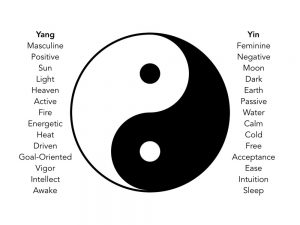
Ayurvedic Medicine/Ayurveda
An ancient Indian medical system. ‘Ayur’ means life and ‘veda’ translates to knowledge. It was first passed down orally, and written down over 5,000 years ago in the four sacred texts called the Vedas. Ayurvedic treatment includes products (plants/herbs, and small amounts of animal, metal and mineral), diet, exercise and lifestyle. Ayurveda, being the sister philosophy to yoga, is commonly practised by yogis.
Similarly to TCM, the 5 Element Theory is also used in Ayurvedic Medicine. These elements are ether/space, air, fire, water and earth.
The three doshas in Ayurveda are vata, pitta and kapha. The doshas are all comprised of the 5 elements. Vata is air and space. Pitta is fire and water. Kapha is water and earth. You can be a combination of two or three. We have all three doshas within us in different ratios.
Vata
Is represented by movement. It is responsible for the nervous system, breathing and movement throughout the body. Balanced Vata enables you to feel full of energy, happy, enthusiastic and creative. The mind is calm, clear and alert.
Pitta
Is represented by metabolism. Governs digestion and body temperature, among other things. Within the mind, it stands for a sharp intellect and emotions. When in balance, Pitta shows as contentment, energy, fluency in speech, good digestive power, regulated body temperature, and a clear mind.
Kapha
Is represented by structure. Provides the body with firmness and stability, and maintains the body’s fluid balance. A balanced Kapha gives strength, stamina, a good immune system, patience, and mental stability.
There are dosha quizzes online to find out which one you are, and what your recommendations are.
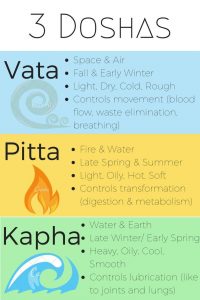
Naturopathic and Herbal Medicine
Naturopathy
Emerging some years later, the term Naturopathy was coined in 1895. However, the ancient Greek “Father of Medicine” Hippocrates, advocated Naturopathic Medicine even before the term existed.
The 6 Naturopathic Principles:
- The healing power of nature – trust in the body’s inherent wisdom to heal itself
- Identify and treat the causes – look beyond the symptoms to the underlying cause
- First do no harm – utilise the most natural, least invasive and least toxic therapies
- Doctor as teacher – educate patients in the steps to achieving and maintain health
- Treat the whole person – view the body as an integrated whole it all its physical and spiritual dimensions
- Prevention – focus on overall health, wellness and disease prevention
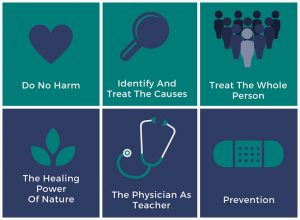
The modalities practised by a Naturopath vary widely depending on their training. In a nutshell, Naturopaths practise Complementary and Alternative Medicine (CAM). This can include herbal medicine, homeopathy, acupuncture, kinesiology, massage, colonic enemas, chelation therapy, cranial osteopathy, hair analysis, iridology, live blood analysis, and others. A Naturopath will always specialise in Herbal Medicine and they may practise in one or more of the other modalities as well.
The origins of Herbal Medicine date back thousands of years. Back to the time when Medicine and Herbal Medicine were one (as it still is in some countries).
Doctors were Naturopaths and they prescribed herbs as medicine. With good intention, many medications originated from herbs, but they are now formulated synthetically to replicate constituents found in plants. Examples of this are morphine from opium poppy and aspirin, which was originally derived from Willow bark and Meadowsweet. Hippocrates used plants of the willow family to treat headaches.
Herbalists use plants as medicine because plants contain multiple constituents which work synergistically. Whereas, medications are composed of one single constituent.
Medications are like an ambulance at the bottom of a cliff. They mask the symptoms, rather than addressing the underlying cause. Research proves that Herbal Medicine is as effective as medications, with little or no side effects. Medications are not found in nature, or recognised by the body. Medications take a toll on the liver, which must detox all foreign materials entering the body. Herbs are 100% natural. Our bodies recognise and accept nature.
Of course, there is a time and place for Western Medicine during emergencies. However, the majority of our modern diseases are as a result of poor diet and lifestyle choices, and can be greatly improved by healthy diet and lifestyle choices e.g. obesity, type 2 diabetes, high blood pressure, heart disease, and stroke.
People are becoming more and more aware of health through the news and media. With the increasing concerns of side effects from drugs and antibiotic resistance, getting back to nature is more important now than ever.
Herbal Medicines are used to formulate Liv’s specifically designed Tonics.
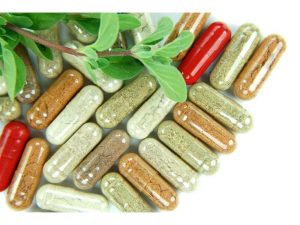
Blood Types
The Paleo revolution represents blood type O. The Neolithic revolution represents blood type A. The migration of races from the original African homeland to Europe, Asia and America represents blood type B. The modern merging of separate groups represents blood type AB. Some people find they feel better sticking to the diet suited to their blood type. There is a well-known book all about blood types and foods/diets, ‘Eat Right 4 Your Type’ by Dr Peter J. D’Adamo.
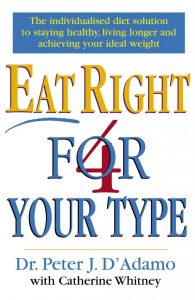
Type O’s
More suited to a high protein diet as they have stronger digestion and more stomach acid for breaking down protein. They have a resilient immune system and should do intense physical activity to keep healthy. Famous people with blood type O: Queen Elizabeth II, Ronald Regan and Elvis Presley.
Type A’s
Most healthy on a predominantly vegetarian diet. They have less stomach acid, therefore, are unable to digest as much protein. Type A’s are suited to more relaxing physical activity to calm stress. Famous people with blood type A: Adolf Hitler, George Bush and Britney Spears.
Type B’s
Have a tolerant digestive system and can be most flexible with their dietary choices. Type B’s can handle dairy better than any of the other blood types. They need balance, and respond best to stress with creative activities. Famous people with blood type B: Johnny Depp, Leonardo DiCaprio, Paul McCartney.
Type AB’s
Are not surprisingly a combination of type A and B. They are adaptive to changing dietary and lifestyle conditions. This blood type is rare (2%-5% of the world’s population) and less than 1,000 years old. Famous people with blood type AB: Barack Obama, Jackie Chan, John F. Kennedy, and Liv Kennedy (it’s not just a Kennedy thing!).
If you are unsure of your blood type ask your doctor to include it in your next blood test.
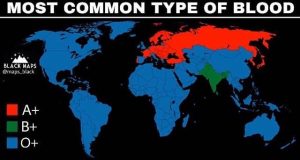
Top Tips
Nature knows best. Nutritious food is medicine and medicine should be food. Prioritise natural health practitioners. Medications are like an ambulance at the bottom of a cliff. Be aware of your blood type. Notice if you feel better eating accordingly. Type O’s are suited to Paleo and high protein diet. Type A’s thrive as vegetarian and can digest grains. Type B’s can eat dairy and have the most flexible choices. AB’s are the new kids on the block and adaptive to change.
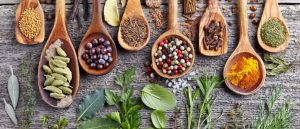
Here’s a little question quiz to test your memory from this blog. Less than 5/10 means you need more omega 3!
Quiz
- Approximately what percentage of people in Asia and Africa still rely on Traditional Medicine as primary healthcare?
- What do ‘ayur’ and ‘veda’ translate to?
- Ayurveda was first passed down orally around how many years ago?
- The three doshas in Ayurveda are?
- How many elements comprise the TCM and Ayurvedic Medicine Theories?
- What term was coined in 1895?
- The four blood types are?
- What is the original blood type from the time of our hunter-gatherer ancestors?
- Name the blood type that is most suited to a predominantly plant-based diet?
- What is the rarest blood type, represented by 2-5% of the population and has existed for less than 1,000 years?
(Answers are after the picture)
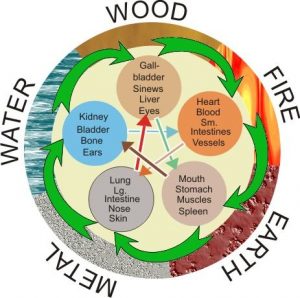
Answers
- 80%
- ‘Life’ and ‘knowledge’
- 5,000
- Vata, pitta and kapha
- 5
- ‘Naturopathy’
- O, A, B and AB
- O
- A
- AB


